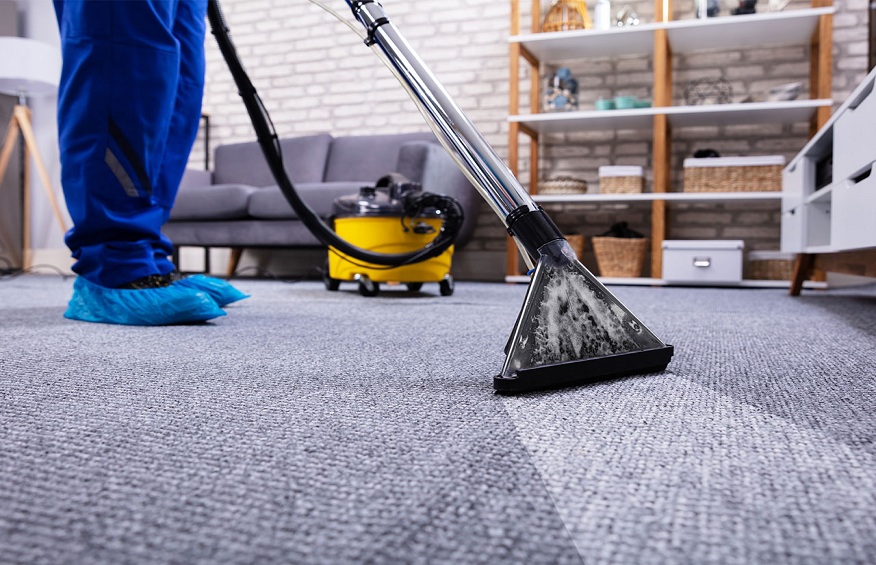Commercial buildings with high-security measures demand meticulous attention to detail, especially when it comes to cleaning protocols. The significance of maintaining a pristine environment is not just about aesthetics but is intertwined with the safety and confidentiality of the occupants. In this exploration, we delve into the essential commercial cleaning protocols for high-security buildings, with a nod to the relevance of office cleaning San Diego.
Understanding the Unique Challenges
Sensitive Information Handling:
- Confidential Spaces: High-security buildings often house confidential information. Cleaning protocols must respect the privacy of such areas.
- Documented Procedures: Clearly document procedures for handling sensitive information during cleaning to avoid breaches.
Limited Access Areas:
- Restricted Zones: Identify and communicate areas with restricted access, ensuring that cleaning staff is aware of these zones.
- Escort Protocols: Implement protocols requiring cleaning staff to be escorted in certain high-security areas.
Tailoring Cleaning Plans to Security Levels
Security Classification Considerations:
- Understanding Security Levels: Different areas within a high-security building may have varying security classifications. Tailor cleaning plans accordingly.
- Customized Cleaning Schedules: Develop cleaning schedules that align with the security requirements of specific zones.
Collaboration with Security Personnel:
- Regular Meetings: Conduct regular meetings between cleaning staff and security personnel to address evolving security needs.
- Information Sharing: Facilitate the exchange of information between cleaning teams and security to enhance overall awareness.
Specialized Training for Cleaning Staff
Confidentiality Training:
- Emphasizing Confidentiality: Provide specialized training on the importance of confidentiality during cleaning activities.
- Scenario-Based Training: Simulate scenarios to prepare cleaning staff for potential challenges in handling sensitive information.
Emergency Response Protocols:
- Immediate Reporting: Train cleaning staff to report any suspicious activities or security breaches immediately.
- Collaboration with Security Teams: Establish clear lines of communication for swift collaboration with security teams during emergencies.
Cleaning Equipment and Tools
Secure Storage:
- Locked Storage Areas: Ensure that cleaning equipment and tools are stored in locked areas when not in use.
- Limited Access: Limit access to cleaning supplies to authorized personnel only.
Use of Eco-Friendly Products:
- Environmentally Conscious Cleaning: Consider using eco-friendly cleaning products to align with sustainability goals without compromising security.
- Non-Intrusive Formulas: Choose cleaning products with non-intrusive formulas that do not compromise air quality in secure spaces.
Focus on High-Touch Surfaces
Regular Disinfection:
- Frequent Disinfection: Implement regular disinfection schedules, with a particular focus on high-touch surfaces such as doorknobs, elevator buttons, and access control panels.
- Use of Antimicrobial Agents: Integrate antimicrobial agents into cleaning solutions to provide an added layer of protection.
Technology-Infused Cleaning:
- Smart Cleaning Devices: Explore the use of smart cleaning devices equipped with sensors to target areas that require heightened attention.
- Data-Driven Cleaning Approaches: Leverage data from smart devices for data-driven decision-making in cleaning protocols.
Minimizing Disruption to Security Systems
Coordination with Security Installations:
- Understanding Security Layouts: Cleaning staff must have a thorough understanding of the building’s security installations to avoid disrupting systems.
- Scheduled Cleaning Times: Coordinate cleaning schedules with security system maintenance to minimize overlap.
Non-Intrusive Cleaning Practices:
- Quiet Cleaning Methods: Utilize cleaning methods and equipment designed for minimal noise to avoid disturbances in sensitive areas.
- Strategic Cleaning Routes: Plan cleaning routes that avoid direct contact with security checkpoints and surveillance systems.
Security Checks for Cleaning Personnel
Background Checks:
- Thorough Screening: Conduct comprehensive background checks for all cleaning staff members working in high-security buildings.
- Regular Renewal: Establish protocols for the regular renewal of background checks to ensure ongoing suitability.
ID Badge Requirements:
- Visible Identification: Require cleaning staff to wear visible identification badges at all times while on duty.
- Access Control Integration: Integrate cleaning staff identification with access control systems for enhanced security.
Continuous Evaluation and Adaptation
Periodic Security Audits:
- Collaborative Audits: Conduct collaborative security audits involving both security and cleaning teams.
- Adaptation Strategies: Develop strategies to adapt cleaning protocols based on the outcomes of security audits.
Feedback Mechanisms:
- Open Communication Channels: Maintain open communication channels between security personnel and cleaning staff to encourage the sharing of feedback.
- Anonymous Reporting: Establish anonymous reporting mechanisms for cleaning staff to raise security-related concerns without fear of repercussions.
Sustainability in High-Security Cleaning
Green Cleaning Initiatives:
- Eco-Friendly Practices: Integrate green cleaning initiatives where possible to align with sustainability goals.
- Recycling Programs: Implement recycling programs for cleaning materials to reduce environmental impact.
Energy-Efficient Cleaning Equipment:
- Energy-Efficient Devices: Invest in energy-efficient cleaning equipment to reduce the overall energy consumption in high-security buildings.
- Smart Power Management: Utilize smart devices with power management features for efficient energy use.
Conclusion
In the realm of high-security buildings, where confidentiality and safety are paramount, maintaining cleanliness is more than a visual concern—it’s a strategic imperative. By integrating specialized cleaning protocols with a focus on security, high-security buildings can create an environment that safeguards both the physical well-being and the confidential information housed within. As the landscape of security evolves, so too must the cleaning protocols adapt to meet new challenges and uphold the sanctity of high-security spaces, ensuring a harmonious blend of safety, cleanliness, and efficiency.



